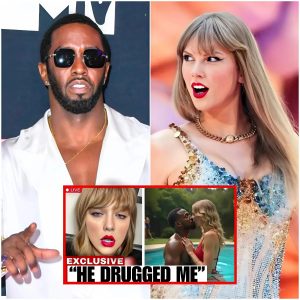In a shocking revelation, R&B star Chris Brown opened up about a troubling encounter with musician mogul Sean “Diddy” Combs during his early years in the music industry. The artist behind hits like “Iffy” recently shared insights into his near-signing with Bad Boy Records, Diddy’s legendary label. However, what should have been a pivotal moment in his career quickly took a disturbing turn.

During an interview, Brown recounted how, at the tender age of twelve, he was approached by Diddy, who at the time was scouting young talent for his label. Brown’s narrative took an unsettling direction as he described how Diddy allegedly attempted to pressure him into a more inappropriate relationship, an experience that many would find deeply troubling, especially given Brown’s young age.
Brown’s story has drawn significant media attention, not only because of the gravity of the allegations but also due to the stark contrast between the predatory behavior he describes and the public persona of Diddy as a successful music executive and entrepreneur. It raises important questions about the power dynamics in the music industry, particularly regarding young artists who are often vulnerable and impressionable.
The revelation that a figure of Diddy’s stature could exhibit such predatory behavior is alarming. Brown’s experience is a stark reminder of the risks young artists face when navigating the often turbulent waters of the entertainment industry. The allure of fame and success can sometimes mask the dangers lurking behind closed doors.

This incident also sheds light on a larger issue: the importance of safeguarding young talents in the music world. The industry has seen several high-profile cases where the exploitation of young artists has led to serious consequences. As Brown’s story illustrates, the repercussions of these encounters can linger long after the events themselves, affecting the mental health and career trajectories of those involved.
Critics and advocates alike are calling for greater accountability within the industry. There is a pressing need for robust systems to protect young artists, ensuring they are not preyed upon by those in positions of power. While Brown has established himself as one of the most successful artists of the last decade, his revelations serve as a sobering reminder of the challenges many faces behind the glitz and glamour.
As the conversation surrounding Brown’s experience continues, it emphasizes the importance of awareness, protection, and support for young artists in an industry that can often be unforgiving. It is vital that the music community listens and learns from these stories, fostering an environment where talent can thrive without the fear of exploitation.





